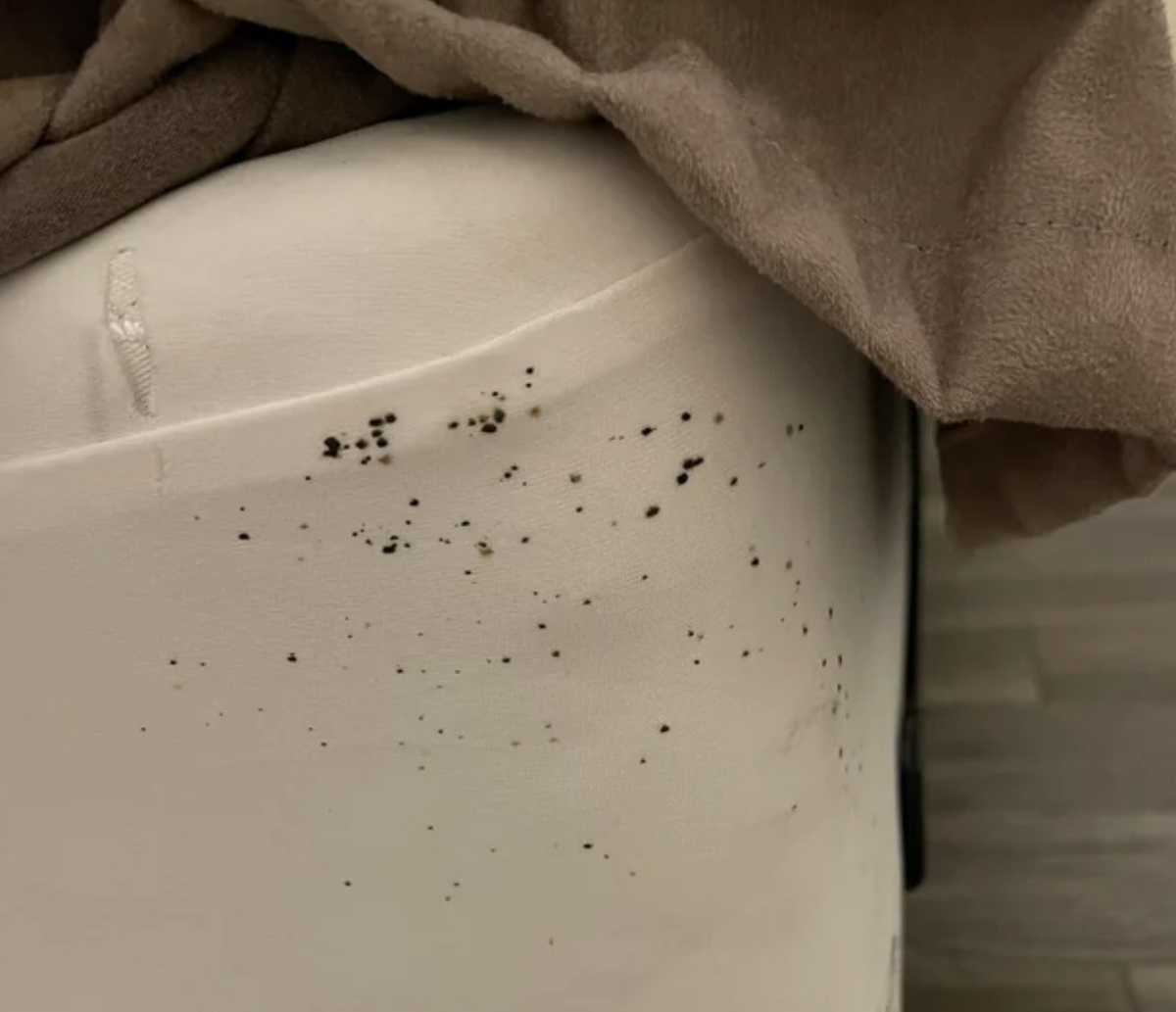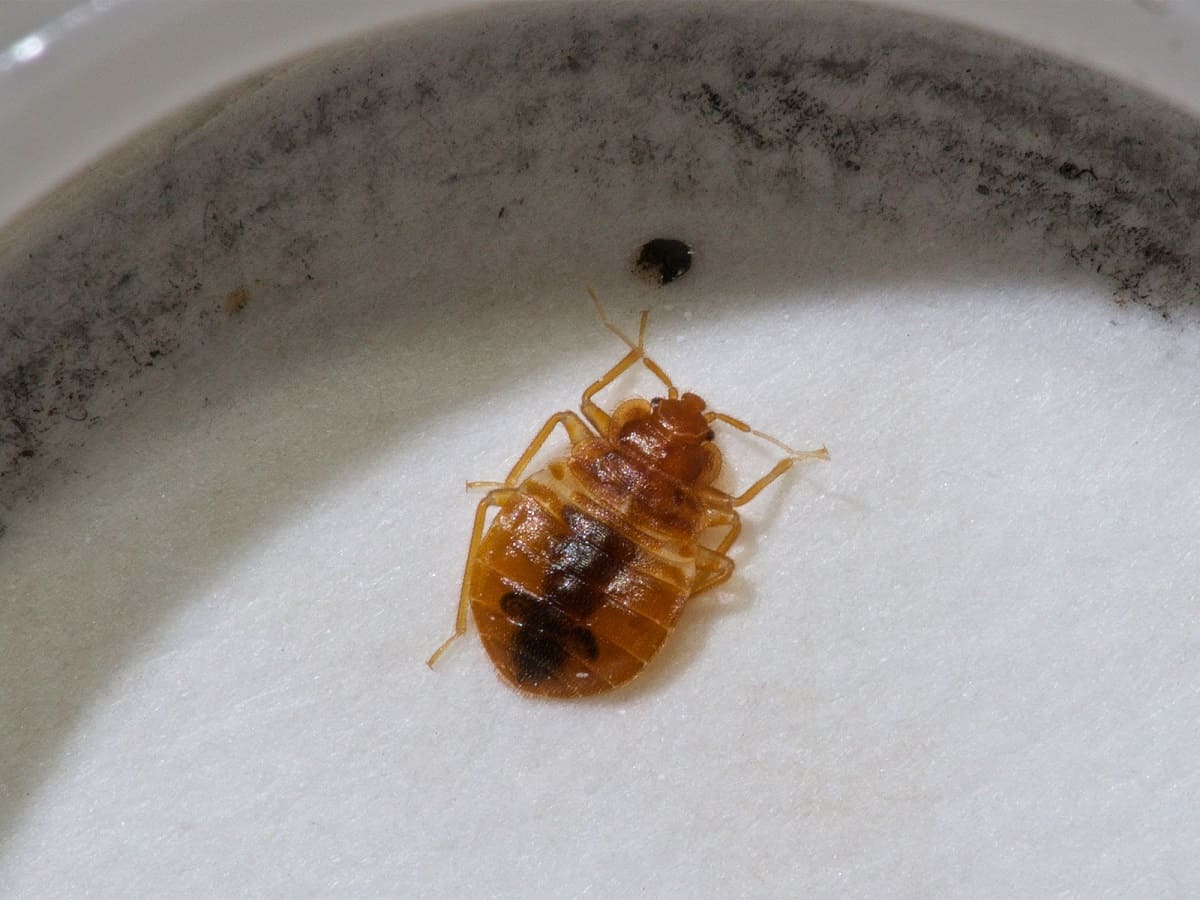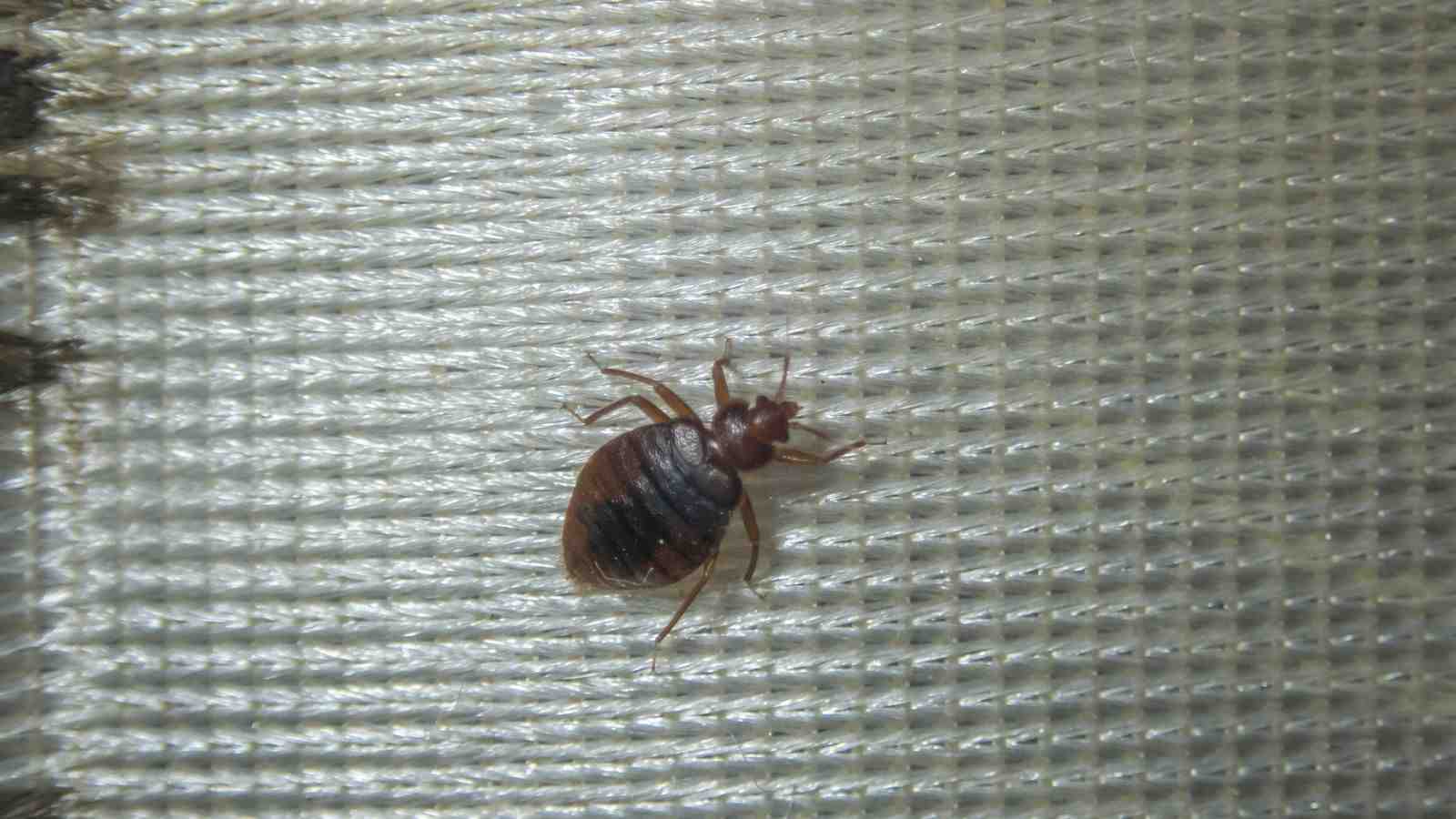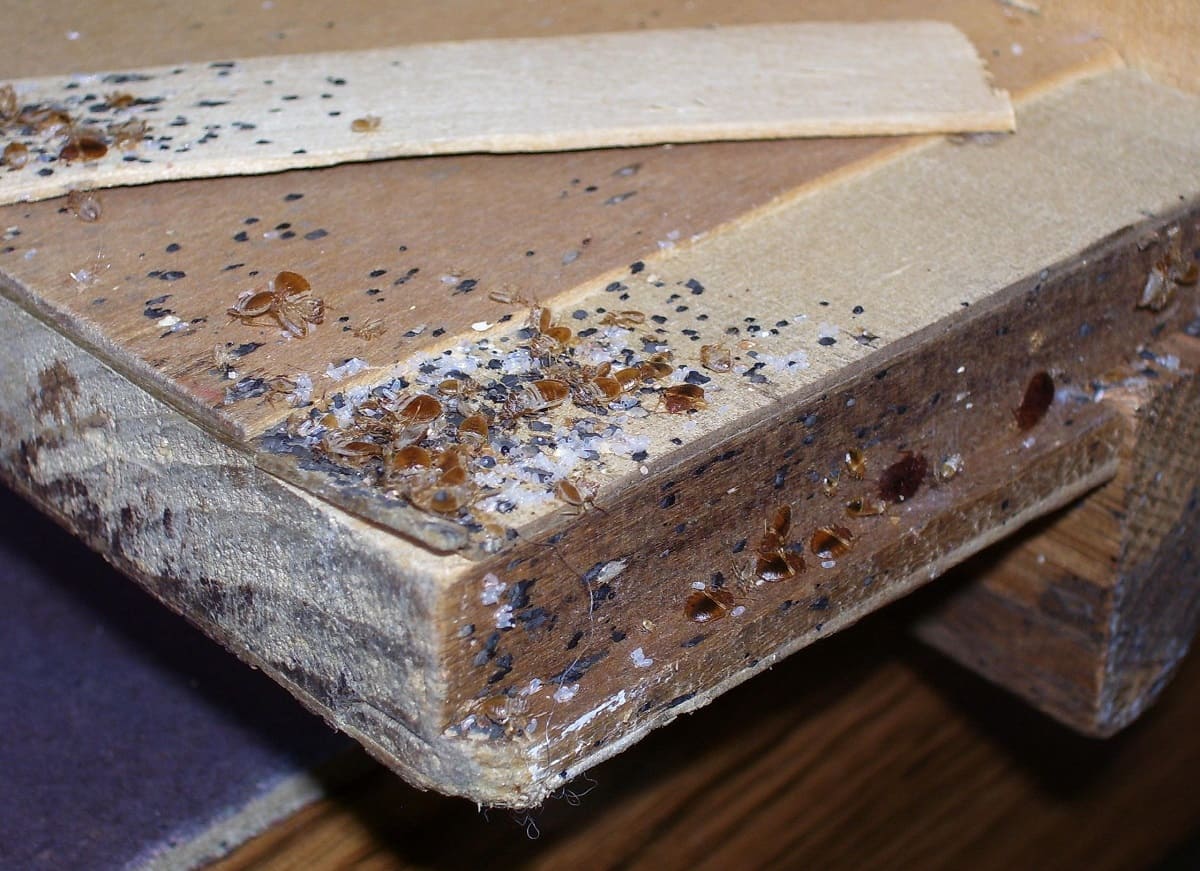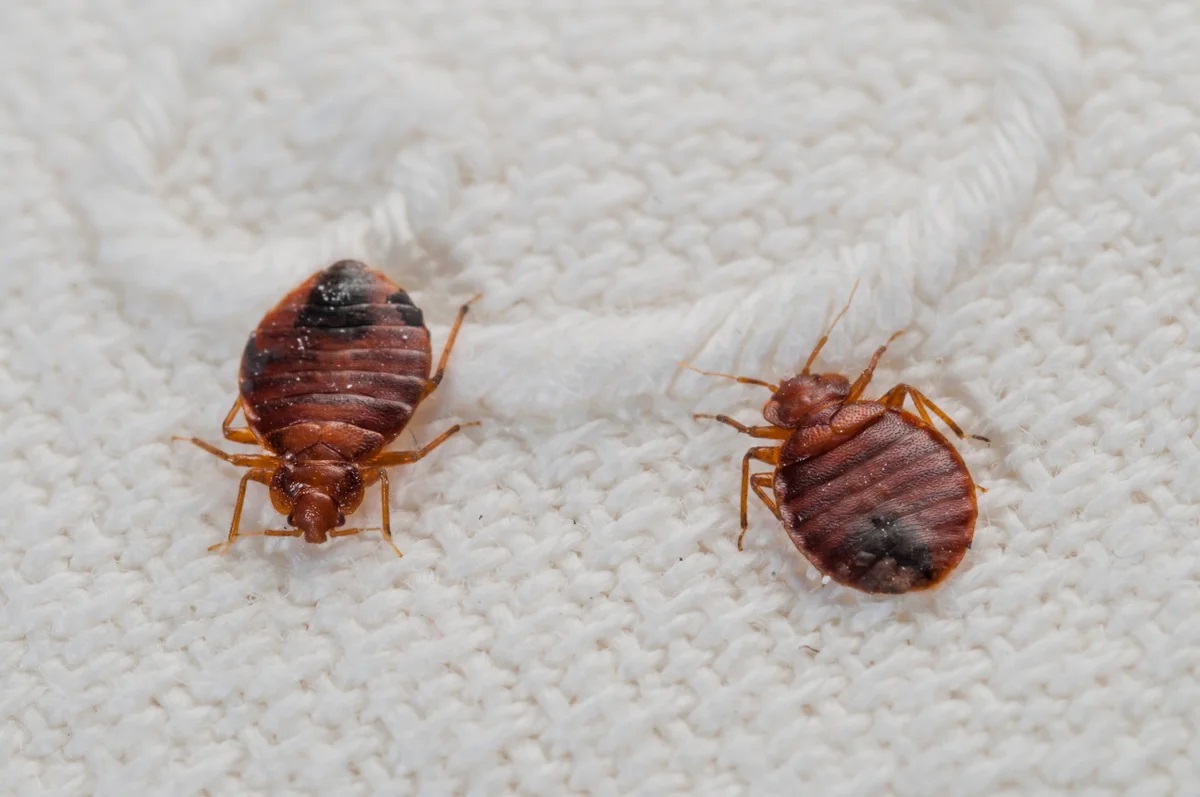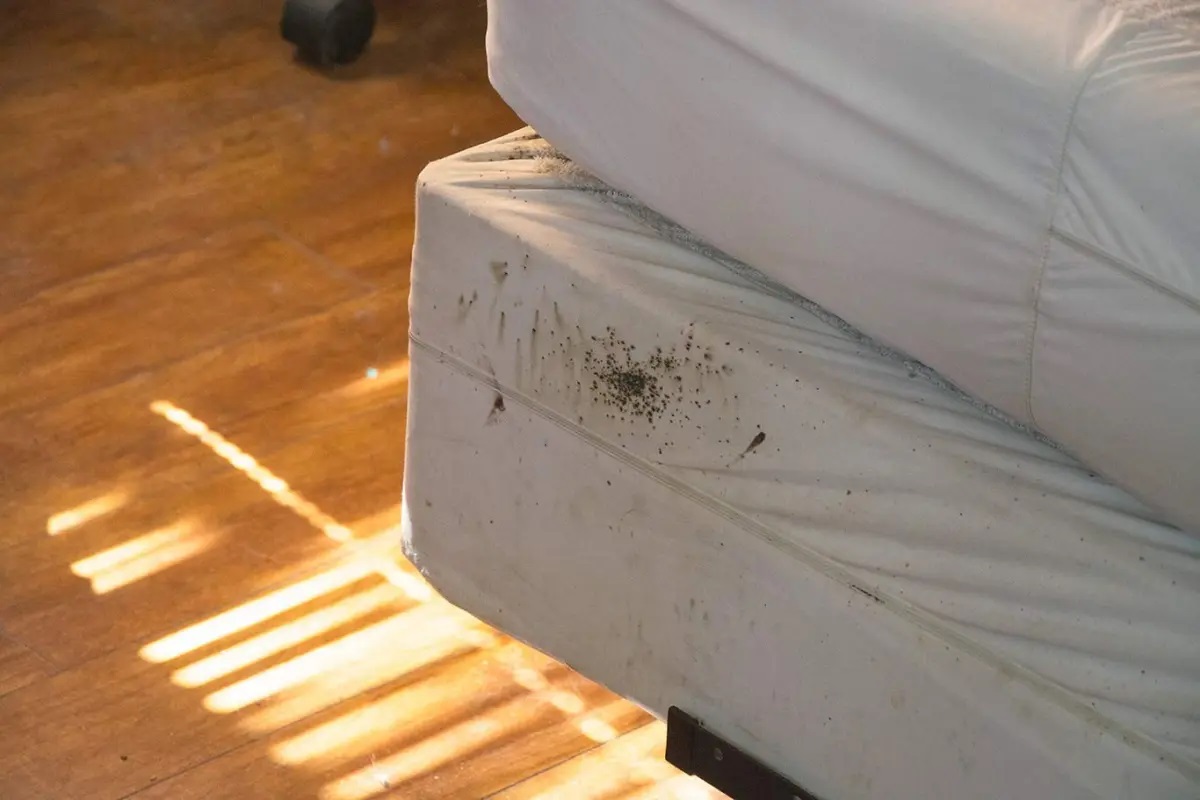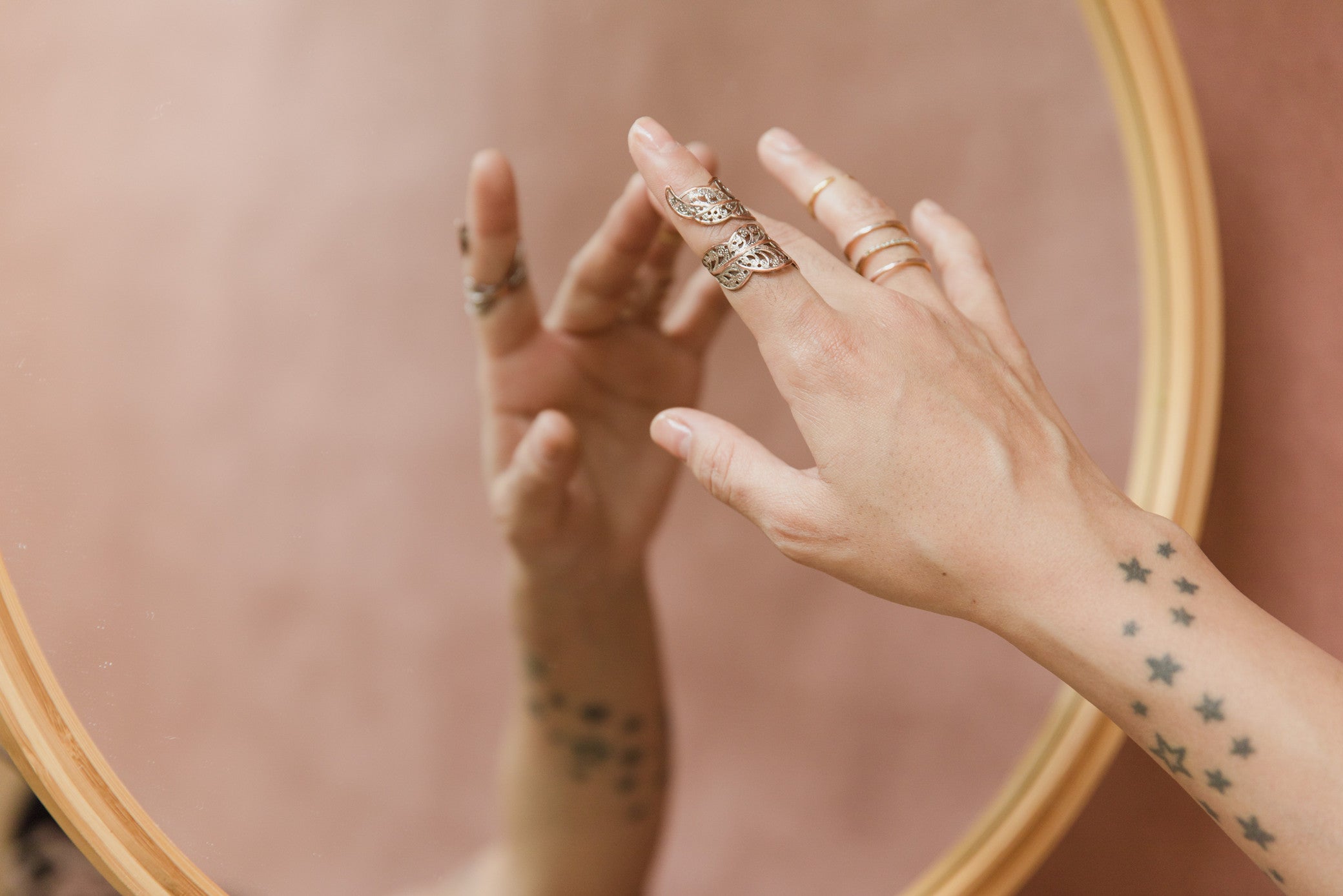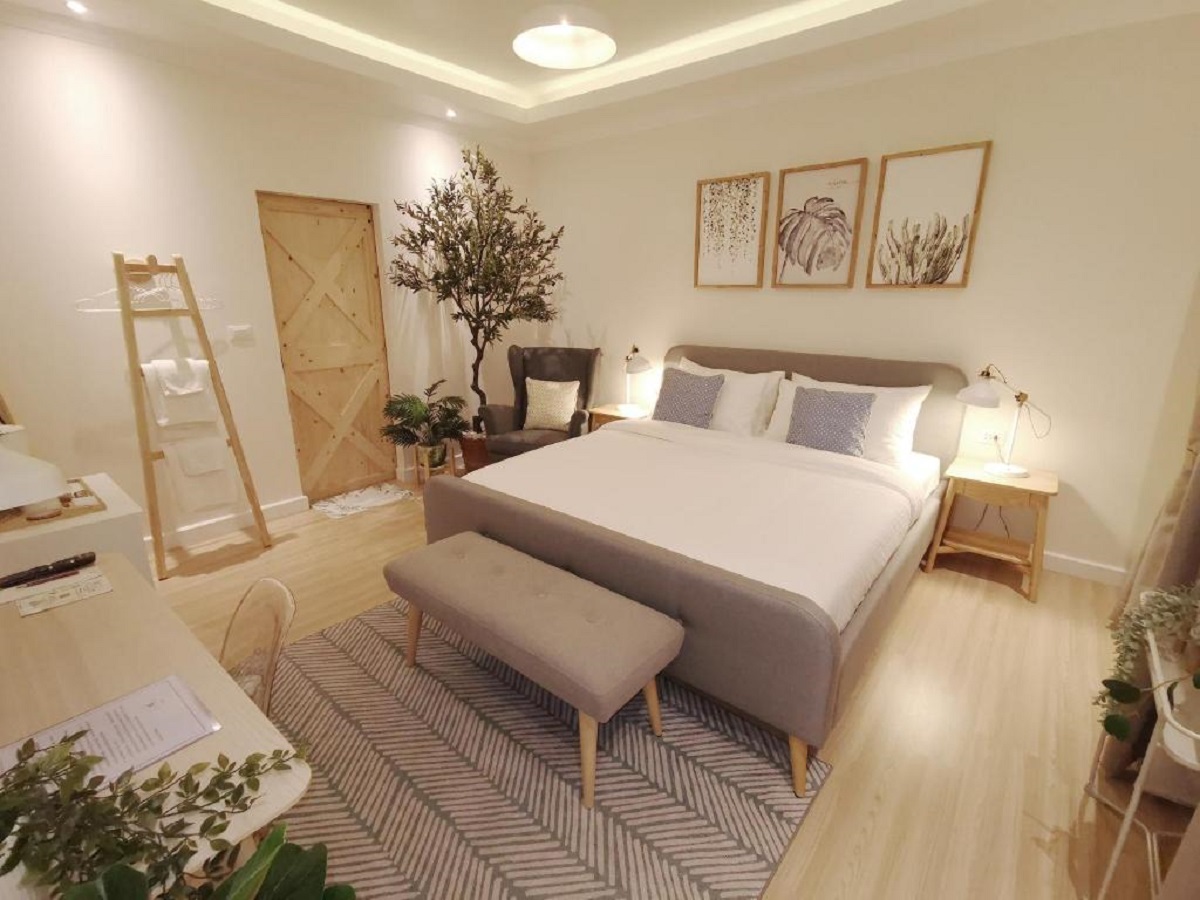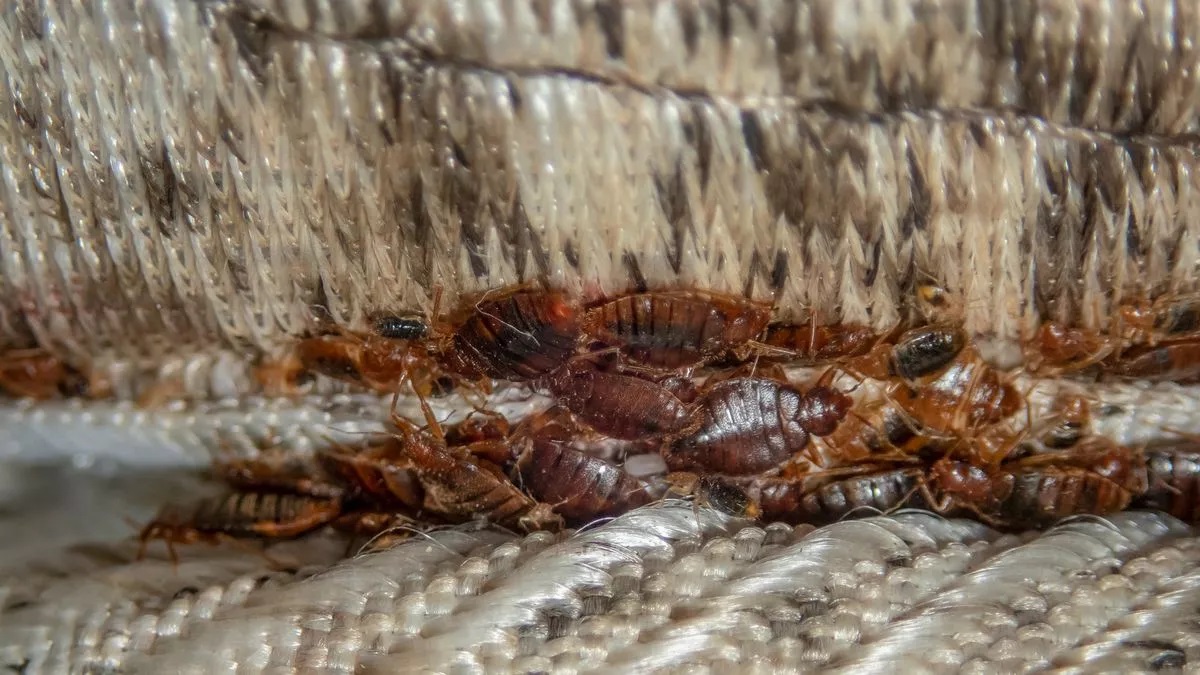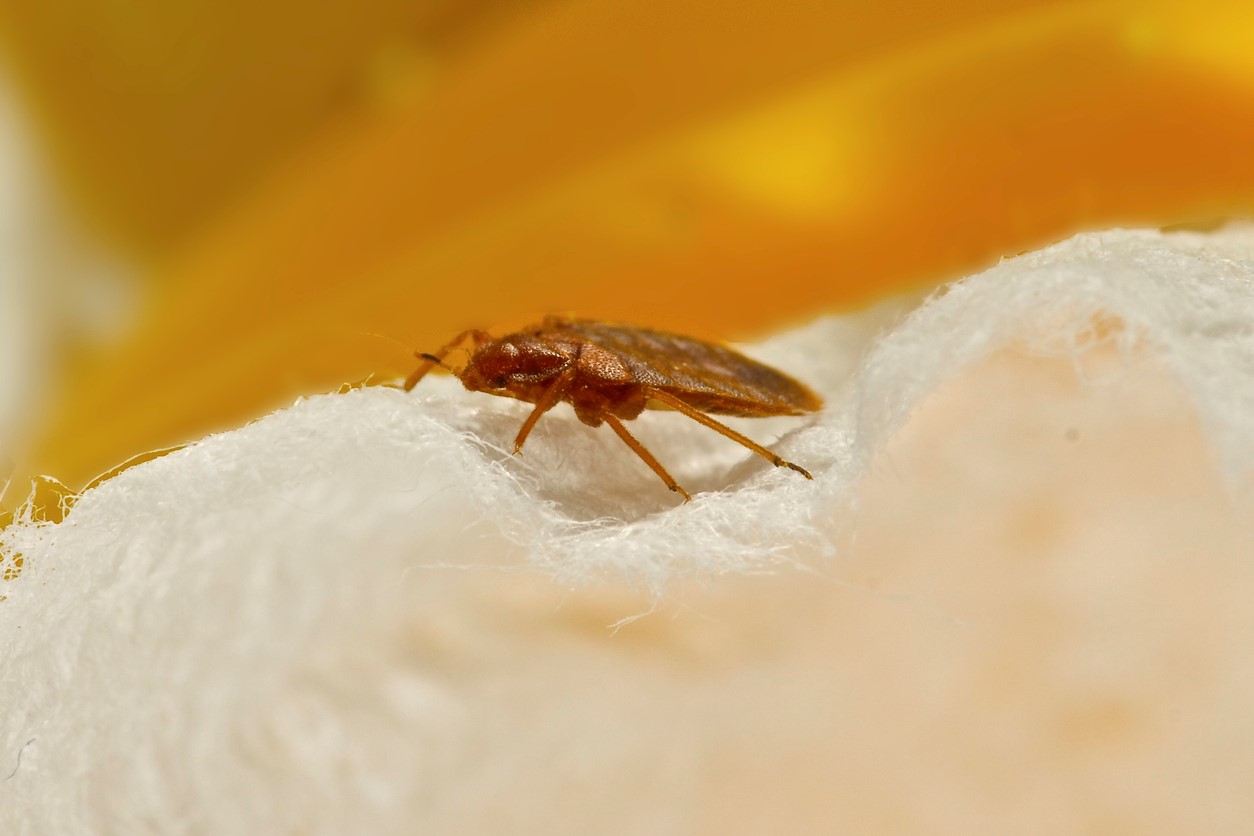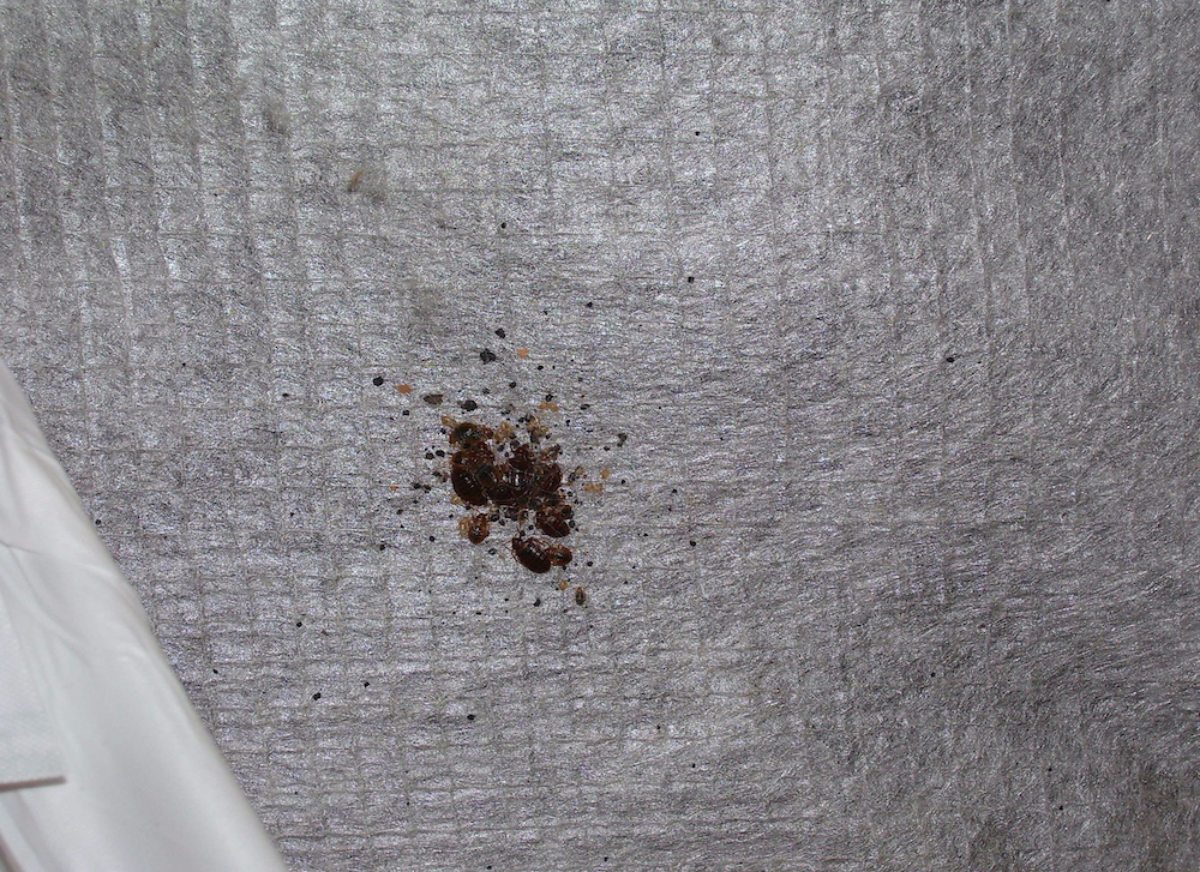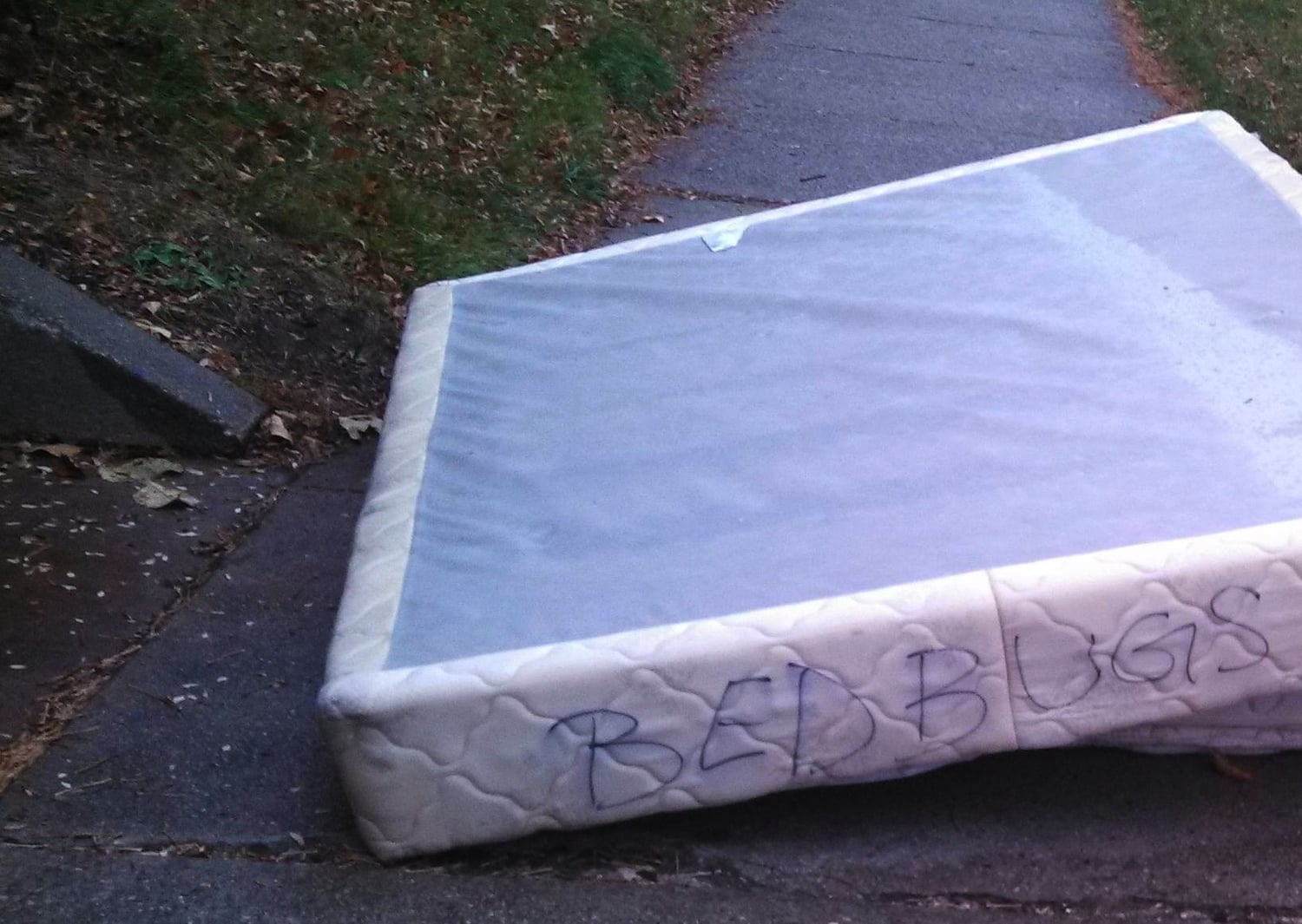Home>Furniture>Bedroom Furniture>How To Check For Bed Bugs In A Hotel


Bedroom Furniture
How To Check For Bed Bugs In A Hotel
Modified: October 28, 2024
Learn how to check for bed bugs in a hotel with our comprehensive guide. Protect your bedroom furniture from these pesky pests and ensure a restful stay.
(Many of the links in this article redirect to a specific reviewed product. Your purchase of these products through affiliate links helps to generate commission for Storables.com, at no extra cost. Learn more)
Introduction
When staying in a hotel, the last thing you want to encounter is a bed bug infestation. These tiny pests can quickly turn a pleasant trip into a nightmare, causing discomfort and potential health issues. To protect yourself and ensure a peaceful night’s sleep, it’s essential to know how to check for bed bugs in a hotel.
Bed bugs are small, reddish-brown insects that feed on human blood. They are excellent hitchhikers and can easily latch onto luggage or clothing, making hotels a common place for infestations. Unfortunately, bed bugs are not limited to budget or low-quality accommodations; they can be found in upscale hotels as well.
By actively checking for bed bugs before settling into your hotel room, you can prevent bites, allergic reactions, and the potential spread of these unwanted pests to your home.
In this article, we will guide you through the process of inspecting a hotel room for bed bugs, highlighting the signs to look for and the precautions to take. With this knowledge, you’ll be equipped to protect yourself during your travels and ensure a bed bug-free stay.
Key Takeaways:
- Protect your health and home by actively checking for bed bugs in hotel rooms. Early detection and thorough inspection can prevent bites, allergic reactions, and potential infestations in your own living space.
- If you encounter bed bugs in a hotel, notify staff immediately, request a new room, and secure your belongings. Document your findings and follow up with hotel management to address the issue properly.
Read more: How To Check Furniture For Bed Bugs
Reasons to Check for Bed Bugs in a Hotel
Checking for bed bugs in a hotel room is crucial for several reasons. Here are the primary reasons why you should make it a priority:
- Prevent Infestation at Home: Bed bugs are notorious for hitchhiking and can easily stow away in your luggage or clothing. By identifying and addressing a potential infestation in a hotel room, you can prevent these pests from invading your own home and causing a major headache.
- Protect Your Health: Bed bug bites can lead to various allergic reactions, skin irritations, itching, and in rare cases, infections. By checking for bed bugs and taking the necessary precautions, you can minimize your risk of encountering these pests and safeguard your well-being.
- Avoid Sleep Disruptions: Bed bugs are primarily active at night and feed on human blood while we sleep. Their bites can be extremely itchy and uncomfortable, potentially leading to sleep disruptions and a less enjoyable stay. By ensuring your hotel room is bed bug-free, you can rest peacefully and wake up refreshed.
- Prevent Negative Travel Experiences: Encountering bed bugs during your travels can be an unpleasant and stressful experience. Dealing with bites, itching, and the need to change accommodations can quickly turn a vacation or business trip into a nightmare. By checking for bed bugs in advance, you can avoid these negative situations and enjoy your trip with peace of mind.
- Hold the Hotel Accountable: By conducting a thorough inspection and documenting any signs of bed bugs, you can bring the issue to the attention of hotel management. This not only protects your own comfort but also helps ensure that the hotel takes appropriate actions to address the infestation and protect future guests.
By understanding the reasons for checking for bed bugs in a hotel, you can prioritize this essential task and take proactive measures to protect yourself and minimize the risk of encountering these unwanted pests during your stay.
Signs and Symptoms of Bed Bug Infestation
Being able to identify the signs and symptoms of a bed bug infestation is crucial when inspecting a hotel room. Here are the common indicators to look out for:
- Visible Bed Bugs: Adult bed bugs are about the size of an apple seed and have a reddish-brown color. While they are good at hiding, you may spot them on the mattress, bedding, or nearby furniture.
- Bed Bug Eggs and Shells: Bed bug eggs are white or translucent and are usually found in clusters. They are about 1mm in size and may be present in seams, crevices, or corners of the mattress or furniture. Empty egg shells or molted skins are also signs of an infestation.
- Dark Stains on Bedding or Mattress: Bed bugs leave behind small dark stains or spots on bedding or the mattress. These stains are a result of their digested blood and excrement.
- Musty Odor: Bed bugs release a distinctive musty odor, often described as a combination of coriander and almonds. If you detect an unpleasant scent in the hotel room, it could be an indication of a bed bug infestation.
- Bite Marks on Your Body: Bed bug bites usually appear as red, itchy welts on exposed areas of your body, such as the arms, legs, face, or neck. These bites are usually in a straight line or a cluster and can be accompanied by swelling or a rash.
- Black Spots or Fecal Droppings: Bed bugs often leave behind black or brown droppings on bedsheets, mattresses, or upholstery. These droppings resemble small dots or smears and can be an early warning sign of an infestation.
If you notice any of these signs in a hotel room, it is essential to take immediate action and notify hotel staff. Remember, the earlier an infestation is detected, the easier it will be to address and prevent further spread. Take precautions when inspecting for bed bugs to protect yourself and ensure a comfortable stay.
Precautions to Take Before Checking for Bed Bugs
Before beginning your bed bug inspection in a hotel room, it’s important to take certain precautions to avoid inadvertently spreading these pests or exposing yourself to bites. Here are some essential steps to follow:
- Keep Luggage Off the Floor: As soon as you enter the hotel room, place your luggage on a hard surface, such as a luggage rack or a tiled area. Avoid putting your bags on the bed, upholstered furniture, or carpet, as these areas are more likely to harbor bed bugs.
- Use a Protective Barrier: Consider using a large trash bag or a bed bug-proof luggage liner to further protect your belongings. Seal your luggage or wrap it securely before placing it on the luggage rack.
- Avoid Unnecessary Clutter: Keep the hotel room tidy and minimize clutter. This makes it easier to inspect for bed bugs and reduces hiding places for these pests.
- Wear Protective Clothing: To protect yourself from bites, wear long-sleeved shirts, long pants, socks, and closed-toe shoes during the inspection. Tucking in your clothes can also help prevent bed bugs from crawling onto your skin.
- Bring a Flashlight and a Magnifying Glass: These tools can come in handy while conducting a detailed inspection. They will help you identify tiny bed bugs, eggs, or excrement that may be hidden in cracks or crevices.
- Inform Hotel Staff: If you noticed any signs of bed bugs in your previous hotel room or if you suspect an infestation, inform the hotel staff immediately. They can provide assistance or arrange for a different room if necessary.
By taking these precautions, you can minimize the risk of bringing bed bugs home and protect yourself from potential bites. Remember, early detection is key, so stay vigilant during your inspection and follow the recommended guidelines to ensure a successful search for bed bugs in the hotel room.
How to Conduct a Bed Bug Inspection in a Hotel Room
Conducting a thorough bed bug inspection in a hotel room is essential to ensure your safety and peace of mind. Follow these step-by-step instructions to effectively check for bed bugs:
- Start with Your Luggage: Before unpacking, carefully inspect your luggage. Look for any signs of bed bugs on the outside, including eggs, stains, or live bugs. If you spot any indicators, it’s best to request a new room or even consider changing hotels.
- Begin at the Bed: Start by examining the bed, as this is the primary area where bed bugs are found. Remove the sheets, blankets, and pillows, and inspect the seams, tufts, and folds of the mattress. Use a flashlight and magnifying glass to spot any signs of bed bugs, eggs, or fecal droppings.
- Inspect the Headboard and Bed Frame: Bed bugs often hide in the cracks and crevices of headboards and bed frames. Look for any dark stains, live bugs, or eggshells. Use your flashlight to thoroughly examine these areas, paying attention to any small cracks or screw holes.
- Check the Furniture: Move on to inspecting the furniture in the room. Look for signs of bed bugs on chairs, couches, and bedside tables. Pay close attention to seams, cushions, and any cracks or joints where these pests might seek refuge.
- Investigate the Curtains and Upholstery: Bed bugs can hide in curtains and upholstered furniture. Carefully inspect these items for any signs of infestation, including stains, eggs, or live bugs. Don’t forget to check behind the curtains and in the folds of upholstery.
- Scan the Walls and Baseboards: Scan the walls, especially near the bed, for any signs of bed bugs. Look for tiny dark spots, which may indicate fecal droppings, and cracks or peeling wallpaper where these pests could hide.
- Check Electrical Outlets and Switch Plates: Bed bugs can also take shelter in electrical outlets and switch plates. Use a flashlight to inspect these areas, looking for any signs of bed bugs, shed skins, or eggs. Take caution while checking electrical components to avoid accidents.
- Complete a Final Sweep: Before declaring the room bed bug-free, do one last comprehensive sweep. Inspect the carpeted areas, behind picture frames, inside drawers, and any other areas where bed bugs may conceal themselves.
If you find any signs of bed bugs during your inspection, notify hotel staff immediately and request a new room or consider changing accommodations altogether. It’s essential not to introduce bed bugs to your own belongings, so be cautious when packing and handle items carefully.
Remember, conducting a thorough inspection and taking preventative measures are key to protecting yourself from bed bugs and ensuring a comfortable and worry-free stay in a hotel room.
Read more: How To Check For Bed Bugs On A Couch
Checking Bedding and Mattresses
When inspecting a hotel room for bed bugs, it’s crucial to carefully examine the bedding and mattresses, as these are common hiding spots. Follow these steps to ensure a thorough check:
- Strip the Bed: Start by removing all bedding, including sheets, pillowcases, and blankets. Place them in a designated area away from the inspection zone.
- Inspect the Mattress: Examine the seams, tufts, and folds of the mattress carefully. Use a flashlight and magnifying glass to search for any signs of bed bugs. Look for live bugs, stains, eggs, or dark spots indicating fecal droppings.
- Check the Box Spring: Lift the corner of the mattress and inspect the box spring thoroughly. Pay attention to the seams and edges, as bed bugs might seek shelter in these areas.
- Scan the Mattress Topper and Mattress Pad: If the hotel room includes a mattress topper or mattress pad, remove them and carefully inspect both sides. Check the seams and folds for signs of bed bugs.
- Examine the Pillows: Inspect the pillows for any signs of bed bugs. Look for stains, eggs, or live bugs. Pay extra attention to the seams and corners.
- Check the Bedding: Before reapplying fresh sheets and pillowcases, carefully inspect them for any indication of bed bugs. Look for stains, dark spots, or physical evidence, such as live bugs or eggs.
If you detect any signs of bed bugs during your inspection, it’s crucial to notify hotel staff immediately and request a new room. Avoid placing your belongings on the bed or any other furniture until the issue has been resolved.
Remember, bed bugs can hide in the tiniest crevices, so be thorough in your search. By checking the bedding and mattresses diligently, you can minimize the risk of encountering bed bugs and ensure a comfortable and pest-free sleep environment.
When checking for bed bugs in a hotel, start by inspecting the mattress, box spring, and headboard for any signs of bugs or their droppings. Use a flashlight to look for small, reddish-brown bugs or dark spots on the bedding.
Inspecting Furniture and Upholstery
When conducting a bed bug inspection in a hotel room, it is crucial to thoroughly examine the furniture and upholstery, as bed bugs can hide in these areas. Here are the steps to follow when inspecting furniture and upholstery:
- Check Chairs and Couches: Start by examining any chairs or couches in the room. Pay close attention to the seams, cushions, and any cracks or joints where bed bugs might hide. Use a flashlight and magnifying glass to thoroughly inspect these areas.
- Inspect Bedside Tables and Dressers: Carefully examine the bedside tables and dressers. Look inside drawers, behind handles, and in the corners for any signs of bed bugs, such as live bugs, eggs, or fecal droppings.
- Examine Upholstered Headboards: If the hotel room has an upholstered headboard, thoroughly inspect it for bed bugs. Check the seams, tufts, and folds where these pests may hide.
- Scan Curtains and Drapes: Bed bugs can hide in curtains and drapes, so be sure to inspect them carefully. Look for any signs of infestation, including stains, eggs, or live bugs. Pay close attention to the folds and behind the curtains.
- Check Other Upholstered Furniture: If there are any other upholstered items in the room, such as ottomans or armchairs, inspect them thoroughly. Carefully examine the seams, cushions, and any cracks or crevices where bed bugs might be hiding.
During your inspection, it’s crucial to be diligent and meticulous. Use a flashlight and magnifying glass to aid in your search for any signs of bed bugs. If you discover any evidence of a bed bug infestation, notify the hotel staff immediately and request a new room.
Remember, bed bugs can be adept at hiding, so it’s essential to be thorough when inspecting furniture and upholstery. By taking these steps, you can minimize the risk of encountering bed bugs and ensure a comfortable and pest-free stay in the hotel room.
Examining the Room’s Cracks and Crevices
When conducting a bed bug inspection in a hotel room, it’s important to thoroughly examine the room’s cracks and crevices, as these areas provide hiding spots for these pests. Follow these steps to ensure a comprehensive check:
- Inspect Baseboards: Start by inspecting the baseboards along the walls. Use a flashlight to carefully examine the gaps, cracks, and any loose or peeling sections. Look for any signs of bed bugs, including live bugs, eggs, or dark spots indicating fecal droppings.
- Scan Window and Door Frames: Check the frames around windows and doors for any signs of bed bugs. Pay close attention to the corners, joints, and any small gaps where these pests could hide.
- Examine Wall Outlets and Switch Plates: Bed bugs can take refuge in electrical outlets and switch plates. Use caution and a flashlight to inspect these areas closely. Look for any signs of bed bugs, such as live bugs, eggs, or shed skins.
- Check Cracks in Walls: Inspect any visible cracks in the walls, as these can serve as hiding spots for bed bugs. Carefully examine the cracks, using a flashlight and magnifying glass if needed.
- Inspect Furniture Joints: Bed bugs often seek refuge in the joints and crevices of furniture. Inspect the joints of tables, chairs, and other furniture items for any signs of bed bugs. Look for live bugs, eggs, or fecal droppings.
- Thoroughly Examine Wallpaper: If there is wallpaper in the hotel room, inspect it closely. Look for tears, loose edges, or any signs of bed bugs lurking behind the wallpaper.
During your inspection, be thorough and methodical. Take your time to check every crack and crevice in the room. If you detect any signs of bed bugs, such as live bugs or eggs, notify hotel staff immediately and request a new room.
Remember, bed bugs can hide in the smallest of spaces, so it’s important to be diligent when examining the room’s cracks and crevices. By following these steps, you can ensure a comprehensive inspection and minimize the risk of encountering bed bugs during your stay.
Investigating Electrical Outlets and Switch Plates
When conducting a bed bug inspection in a hotel room, it’s important to thoroughly investigate electrical outlets and switch plates, as bed bugs can hide in these areas. Follow these steps to ensure a comprehensive check:
- Turn Off the Power: Before inspecting electrical outlets and switch plates, ensure that the power to the room is turned off. This will prevent any accidents or electrical hazards during the inspection process.
- Use a Flashlight: Equip yourself with a flashlight to provide sufficient lighting for your inspection. Bed bugs can be difficult to spot, so good illumination is essential.
- Inspect the Outlets: Carefully examine each electrical outlet in the room. Look for any signs of bed bugs, such as live bugs, eggs, or fecal droppings. Pay close attention to the gaps between the outlet and the wall, as well as any cracks or crevices.
- Remove the Faceplates: Gently remove the faceplates of the electrical outlets and switch plates. Be cautious and handle these components carefully to avoid any damage.
- Examine Behind the Faceplates: Once the faceplates are removed, use your flashlight to inspect behind them. Look for any signs of bed bugs, including live bugs, eggs, or dark spots indicating fecal droppings.
- Check for Eggs and Bugs: Pay special attention to the corners and edges of the electrical boxes, as bed bugs often choose these areas for hiding. Use a magnifying glass if needed to spot any tiny eggs or nymphs.
- Clean and Replace: After completing the inspection, clean the faceplates with a disinfectant wipe and ensure they are dry before reattaching them.
During your inspection, if you discover any signs of bed bugs, such as live bugs, nymphs, or eggs, immediately notify the hotel staff and request a new room. They will take the necessary steps to address the issue and ensure your comfort.
By thoroughly investigating electrical outlets and switch plates, you can minimize the risk of encountering bed bugs in these areas. Remember, early detection is crucial in preventing a full-blown infestation and protecting yourself during your stay.
Read more: How Do You Check For Bed Bugs
Searching for Bed Bugs in Other Areas of the Room
When conducting a bed bug inspection in a hotel room, it’s important to search for bed bugs in other areas beyond the bedding and furniture. Bed bugs can hide in various places within the room. Here’s a guide to help you search for bed bugs in other areas:
- Inspect the Walls: Examine the walls of the room thoroughly. Look for any cracks, crevices, or peeling wallpaper that may provide hiding spots for bed bugs. Pay attention to areas near the bed and along baseboards.
- Check Picture Frames and Wall Decorations: Inspect any picture frames or wall decorations present in the room. Bed bugs can hide behind these items, so carefully examine the edges, corners, and hooks.
- Scan the Ceiling: Look up and scan the ceiling for any signs of bed bugs. Although less common, they can crawl up and hide in cracks or crevices on the ceiling.
- Inspect Light Fixtures: Examine any light fixtures or lamps in the room. Pay close attention to the seams, joints, and corners where bed bugs may seek refuge.
- Investigate Vents and Air Conditioning Units: Check the vents and air conditioning units for signs of bed bugs. These areas can provide suitable hiding spots for these pests.
- Inspect Luggage Racks: Carefully inspect the luggage rack in the room. Look for any signs of bed bugs, including live bugs or eggs, on the rack’s fabric or frame.
- Examine the Carpet and Flooring: Thoroughly inspect the carpeted areas and flooring of the room. Look for any signs of bed bugs, such as live bugs, eggs, or dark stains indicating fecal droppings.
- Check Other Furnishings: Inspect any other furnishings in the room, such as desks or chairs. Use your flashlight and magnifying glass to closely examine the seams, joints, and fabric where bed bugs might hide.
During your inspection, be meticulous and take your time to thoroughly search each area. If you detect any signs of bed bugs, notify the hotel staff immediately and request a new room or change accommodations.
By searching for bed bugs in these various areas of the room, you can ensure a comprehensive inspection and minimize the risk of encountering these unwanted pests during your stay.
What to Do If You Find Bed Bugs in a Hotel
Discovering bed bugs in a hotel room can be distressing, but it’s crucial to take immediate action to protect yourself and prevent the spread of these pests. Here’s what you should do if you find bed bugs in a hotel:
- Notify Hotel Staff: Inform the hotel staff immediately if you find any signs of bed bugs in your room. Provide them with specific details and evidence, such as live bugs, eggs, or stains, to support your claim.
- Request a New Room: Ask the hotel staff to move you to a different room that is not adjacent or directly above/below the infested room. Insist on a room that has undergone professional bed bug treatment to minimize the risk of encountering bed bugs again.
- Secure Your Belongings: Keep your belongings away from the infested area. Place your luggage in the bathroom, preferably on a hard surface, or use bed bug-proof luggage encasements to prevent these pests from hitching a ride back home with you.
- Document Your Findings: Take pictures or videos of the bed bugs or any evidence you find. This documentation can serve as proof and may be necessary if you need to file a complaint or seek compensation from the hotel later on.
- Inspect Your Belongings: After leaving the infested room, inspect your luggage and belongings carefully. Pay attention to seams, pockets, and folds where bed bugs might hide. If you find any signs of infestation, consider treating or disposing of infested items properly.
- Follow Up with the Hotel: After your stay, contact the hotel management to report the incident and express your concerns. They should take appropriate measures to address the issue, such as conducting professional pest control treatments and implementing preventive measures.
- Monitor for Bites and Symptoms: After leaving the hotel, monitor yourself and your belongings for any signs of bed bug bites. If you develop itchy welts or other allergic reactions, consult a healthcare professional for proper treatment.
- Take Precautions at Home: When returning home, take precautions to prevent any potential bed bugs from infesting your residence. Launder your clothes and vacuum your luggage thoroughly, and consider using a bed bug-proof mattress encasement on your bed.
Remember, it’s important to handle the situation calmly and assertively. By promptly reporting the issue and taking the necessary preventive measures, you can protect yourself and minimize the risk of bringing bed bugs home.
Lastly, it’s always a good idea to research and read hotel reviews prior to your stay to help avoid hotels with a history of bed bug issues. However, even the most reputable establishments can encounter bed bugs, so being vigilant and knowing how to respond is essential.
Conclusion
Inspecting a hotel room for bed bugs is an essential step in ensuring a comfortable and pest-free stay. By familiarizing yourself with the signs and symptoms of bed bug infestation and following the proper inspection techniques, you can protect yourself from bites, allergic reactions, and the potential spread of these unwanted pests.
Throughout the inspection process, remember to be thorough and meticulous. Check bedding, mattresses, furniture, cracks, crevices, electrical outlets, and other areas where bed bugs commonly hide. Use a flashlight, magnifying glass, and even protective clothing to aid in your search.
If you do encounter bed bugs in a hotel room, notify the hotel staff immediately, request a new room, and secure your belongings. Document your findings and follow up with the hotel management after your stay to address the issue properly.
Regardless of whether you find bed bugs or not, taking precautions before and during your hotel stay is important. Keep your luggage off the floor, use protective barriers, and avoid clutter to minimize the risk of bed bug infestation.
Remember, early detection is key in preventing a full-blown infestation. By being proactive and vigilant, you can protect yourself, prevent the spread of bed bugs, and enjoy a comfortable and stress-free hotel experience.
By implementing these inspection techniques and taking necessary precautions, you can rest assured knowing that you are well-prepared to check for bed bugs in a hotel and safeguard yourself from these pesky pests.
After mastering how to spot bed bugs in hotels, you might want to tackle another common household pest. If moths have made your pantry their new home, don't fret. Our expert guide on managing these unwelcome guests will show you effective strategies for keeping your food storage areas pristine. Learn from pest control professionals the best tactics to ensure your pantry remains moth-free.
Frequently Asked Questions about How To Check For Bed Bugs In A Hotel
Was this page helpful?
At Storables.com, we guarantee accurate and reliable information. Our content, validated by Expert Board Contributors, is crafted following stringent Editorial Policies. We're committed to providing you with well-researched, expert-backed insights for all your informational needs.
